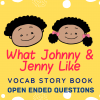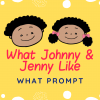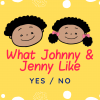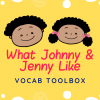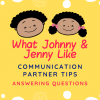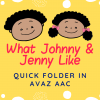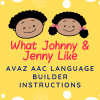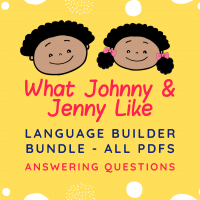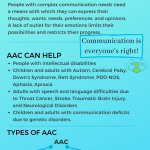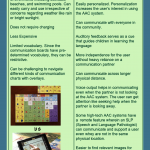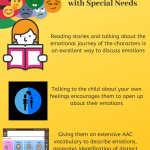Building Language for All Communicative Functions – Greetings, Questions, and Expressing Feelings
Last week, we learnt strategies and vocabulary required for a few communicative functions such as Requesting, Refusing, and Commenting. This week, let’s see how we can build language for a few more communicative functions - namely, Greetings, Answering Questions, and Expressing Feelings. There are, of course, more communicative functions and we’ll see how we can build a communicator’s language for those purposes in future blogs.
Greetings:
Greetings are one of the fundamental components of social communication. It sets the tone for conversations and gets communicators started on making connections with others.
Strategies:
- Teach them to wave hi, give high fives, and fist bumps (or foot-taps and elbow bumps during these COVID times). You can come up with more elaborate and cooler greetings young kids are into these days to get them motivated.
- Use low tech cards with Hi, Hello, and vocabulary for other pleasantries we commonly exchange.
- Enlist a peer such as a friend or a sibling and encourage the children to greet each other.
- If the communicator has a high tech AAC system, make sure they have quick access to pres-stored phrases for greetings.
Vocabulary:
Hi, Hello, How are you, Good morning, Thank you. I’m fine
Answering Questions
Asking too many questions can make the communicator feel tested. So, we must make sure we make a lot of comments and observations too as we ask questions. It's also important to include open-ended questions to encourage the communicators to express their thoughts on any given topic.
Strategies:
- A good point to start will be questions about the communicator's favourite objects or activities.
Is this your truck?
Do you want to listen to music now?
If you are convinced that the communicator's answer to these questions will be a 'Yes', model the language by tapping 'Yes' on the AAC system. Make sure to reinforce it by granting the object/activity immediately.
Ask open-ended questions related to the communicator's favourite thing / activity.
This truck looks cool. What other toys do you like?
2. Ask questions related to pictures, storybooks, and television shows the child is interested in.
'What's the little girl eating?'
'Who gave cake to the dog?
Make a few comments before asking the questions and encourage the communicator to make inferences from what they're reading.
The mom looks mad because Jessica lied to her.
Do you think Jessica is going to be punished?
3. Involve peers and make them ask questions to each other. Children learn better when it's more fun. Have children make silly faces or make silly dance moves and then ask them to stop.
'Do you want to continue making silly faces?'
If the communicator responds, acknowledge and praise. Explain what they have conveyed to you by saying 'Yes'.
Ex'Oh..you're saying 'Yes'. So, you're saying you'd like to keep making silly faces. Sure. Go ahead'
Vocabulary:
Yes, No, Agree, Disagree, here, there, now, later, etc.
Expressing Feelings
There is a wide range of emotions and communicators should be taught to identify these distinct emotions. When children don't have the proper means to express their feelings, they may resort to challenging behaviours. It's important that we teach them to understand and label their emotions. Once they are able to recognize their emotions, they can be taught coping strategies for when they feel overwhelmed with strong emotions.
Strategies:
- Use tools such as emotion wheel and games to help children identify and label emotions.
- Talk about your emotions throughout the day. Make sure you talk about negative emotions such as your anger, disappointment etc. This will encourage the communicators to discuss their negative emotions too.
I got mad when I saw the messy table.
Talk about how you dealt with those emoti ons and tell the communicators they can do something similar too.
I just took a deep breath and listened to some music to calm myself down. Once I was calm, I requested you to help me clean the table.
3. Storybooks are great resources to discuss emotions. Talk about the emotional journey of the characters in the story. Help communicators see the correlation between an event and an emotion.
He's happy because he won the game.
She lost her teddy bear. She must be sad.
Draw the communicator's attention to facial expressions that convey the different emotions so that they can identify the emotions in people around them. This, in turn, helps them identify their own emotions.
4. It's important that AAC users have access to extensive vocabulary for the various emotions. Some children may feel sad when they don’t get to do their favourite activity while others may get mad or feel disappointed about it. Communicators should have access to quick phrases with which they can vent their feelings. Include phrases in their AAC systems for their coping mechanisms too so that they can communicate to others when they need to be left alone or that they don’t feel understood.
Get away from me
I’m going to my room
I need a break now
You’re not listening to me
I’m frustrated
Something’s bothering me
Vocabulary:
happy, sad, frustrated, excited, disappointed, funny, great, mad, etc.
Communicative Functions with Reading
Shared reading can be a great way to teach communicative functions to AAC users. As you read text, encourage the communicator to answer questions. We have put together a Language Learning Bundle with a story to encourage answering questions in emergent communicators.
How to Use the Bundle:ead Language Builder Instructions PDF given below for details on how to use this bundle. Click on the below icons to download the individual PDFs
Subscribe to the Avaz Newsletter
Join 4000+ fellow readers! Get latest articles straight to your inbox. Enter your email address below:
Popular Articles
- Building Literacy: Teaching Grammar to AAC Users
- Expansion of Language: Supporting AAC Learner’s Progress
- Avaz User Stories and Videos
- Avaz Joyful Reading: Resources for Shared Reading
- AAC Resources: Games, Activities and Communication Opportunities
- Avaz AAC User Stories: Why Nishant and his AAC System are Inseparable
- Downloadable Low Tech Communication Boards
- Get the Better of Reading Difficulties with MDA Avaz Reader
- AAC Apps for Adults with Acquired Communication Disorders
- Teletherapy: A smart way to facilitate remote speech therapy for adults and children
